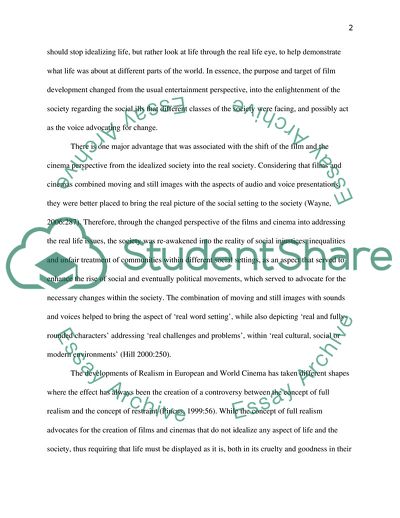Cite this document
(The Meanings and the Developments of Realism in European and World Essay, n.d.)
The Meanings and the Developments of Realism in European and World Essay. https://studentshare.org/visual-arts-film-studies/1813243-discuss-the-meanings-and-the-developments-of-realism-in-relation-to-european-or-world-cinema-you-should-illustrate-your-understanding-through-one-or-two-examples-of-realist-cinema
The Meanings and the Developments of Realism in European and World Essay. https://studentshare.org/visual-arts-film-studies/1813243-discuss-the-meanings-and-the-developments-of-realism-in-relation-to-european-or-world-cinema-you-should-illustrate-your-understanding-through-one-or-two-examples-of-realist-cinema
(The Meanings and the Developments of Realism in European and World Essay)
The Meanings and the Developments of Realism in European and World Essay. https://studentshare.org/visual-arts-film-studies/1813243-discuss-the-meanings-and-the-developments-of-realism-in-relation-to-european-or-world-cinema-you-should-illustrate-your-understanding-through-one-or-two-examples-of-realist-cinema.
The Meanings and the Developments of Realism in European and World Essay. https://studentshare.org/visual-arts-film-studies/1813243-discuss-the-meanings-and-the-developments-of-realism-in-relation-to-european-or-world-cinema-you-should-illustrate-your-understanding-through-one-or-two-examples-of-realist-cinema.
“The Meanings and the Developments of Realism in European and World Essay”. https://studentshare.org/visual-arts-film-studies/1813243-discuss-the-meanings-and-the-developments-of-realism-in-relation-to-european-or-world-cinema-you-should-illustrate-your-understanding-through-one-or-two-examples-of-realist-cinema.


